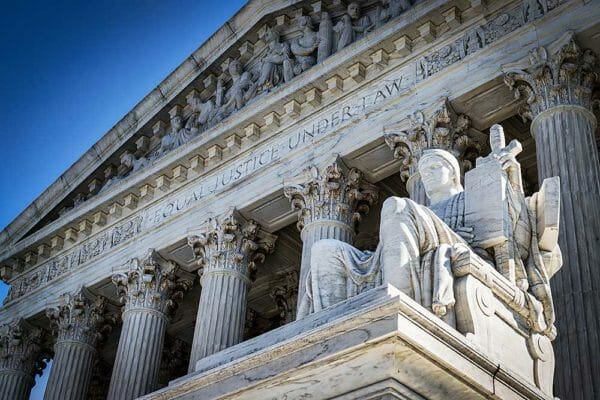
The Supreme Court of the United States announced several orders regarding gun rights today.
The first case that was examined was Garland v. Range. Bryan Range sued the government because he became a prohibited person after pleading guilty to lying about his income to obtain food stamps. The Court gave Range three years of probation and stripped him of his gun rights for life. He claimed that the punishment was inconsistent with the nation’s historical tradition of firearms regulation. The lower Court decided for the government, but the full bench of the Third Circuit Court of Appeals sided with Range.
SCOTUS granted certiorari to the case, vacated the decision, and remanded (GVR) the suit back to the Third Circuit, considering the United States v. Rahimi Supreme Court opinion. In Rahimi, SCOTUS said that a person could be temporarily disarmed if they posed a danger. Range was not convicted of a violent crime, and no one claims he is a danger to himself or others, so it will be interesting to see how the Third Circuit weighs the Rahimi opinion in the rehearing.
The second case that met the same fate due to Rahimi was United States. v. Daniels. This case challenges the federal prohibition of drug users owning guns. In April 2022, police stopped Patrick Daniels’ car because it had no license plate. Police reported that Daniel’s car smelled of marijuana. This smell gave the police probable cause to search the man’s vehicle. Police uncovered marijuana and two firearms.
A jury found Daniels guilty and sentenced him to 46 months in prison for being in possession of a gun while being an unlawful user of a controlled substance. Daniels appealed the guilty verdict, claiming the law violated the Second Amendment. The District Court would rule against the man, but the Fifth Circuit Court of Appeals reversed the decision.
A third case that was sent back down to the circuit due to Rahimi was Antonyuk v. Steven. This case challenges New York State’s Concealed Carry Improvement Act (CCIA). New York passed the CCIA as a response to the Bruen opinion. After the CCIA passed, Ukrainian immigrant Ivan Antonyuk teamed up with Gun Owners of America (GOA) to sue the state. A District Court judge would issue an injunction against the enforcement of the CCIA, but the Second Circuit would step in and stay the injunction. Eventually, the Second Circuit would lift the injunction on many of the critical provisions of the District Court’s injunction.
The final case SCOTUS considered was Harrel v. Raoul, which challenged the Illinois “assault weapons” ban. SCOTUS denied cert, although Alito would have granted cert. The Court denied cert because the merits of the case had not been heard. The Court decided it should let the case work its way through the Courts before taking the case, but Associate Justice Clarence Thomas had strong words for the Seventh Circuit, hinting that SCOTUS was ready to step in and warned the Seventh Circuit to stay within the bounds of the Constitution.
“The Seventh Circuit’s decision illustrates why this Court must provide more guidance on which weapons the Second Amendment covers,” Thomas wrote. “By contorting what little guidance our precedents provide, the Seventh Circuit concluded that the Second Amendment does not protect ‘militaristic’ weapons. It then tautologically defined ‘militaristic’ weapons as those ‘that may be reserved for military use.’ The Seventh Circuit’s contrived ‘non-militaristic’ limitation on the Arms protected by the Second Amendment seems unmoored from both text and history). And, even on its own terms, the Seventh Circuit’s application of its definition is nonsensical. (‘The AR–15 is a civilian, not military, weapon. No army in the world uses a service rifle that is only semiautomatic’). In my view, Illinois’ ban is ‘highly suspect because it broadly prohibits common semiautomatic firearms used for lawful purposes.’ It is difficult to see how the Seventh Circuit could have concluded that the most widely owned semiautomatic rifles are not ‘Arms’ protected by the Second Amendment.”
The merits of Harrel will be heard later this year in a District Court. After the Court’s decision, the case is expected to be appealed to the Seventh Circuit before eventually making its way back to SCOTUS.
About John Crump
John is a NRA instructor and a constitutional activist. John has written about firearms, interviewed people of all walks of life, and on the Constitution. Mr. Crump lives in Northern Virginia with his wife and sons and can be followed on Twitter at @crumpyss, or at www.crumpy.com.

from https://ift.tt/TJPZpgG
via IFTTT

No comments:
Post a Comment